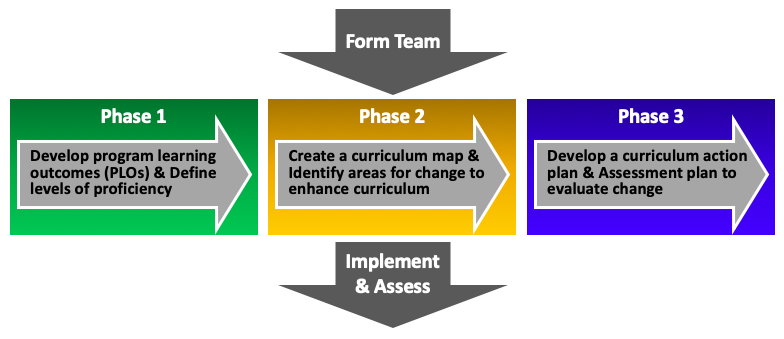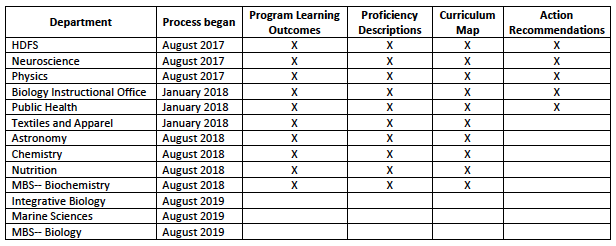What is curriculum redesign?
The redesign initiative is an opportunity for CNS departments to design and structure all undergraduate degrees around a common set of principles. Departments are:
- Defining critical outcomes related to content knowledge and essential skills in the CNS disciplines.
- Intentionally structuring degrees and course offerings to make explicit how students achieve the outcomes as they progress through the degree.
- Encouraging cooperation among faculty within departments to standardize different sections of the same course and to align objectives of courses students take in sequence.
- Facilitating communication between departments to coordinate links between courses students often take simultaneously.
- Making recommendations for changes to degree plans and courses to simplify the path to graduation (including adding flags), while also improving student achievement and satisfaction.
The goal of the CNS curriculum redesign initiative is to realize the recommendations of the 2017 Strategic Master Plan for CNS Undergraduate Curriculum.
Who is engaged in curriculum redesign?
Most CNS departments have convened curriculum redesign committees. Each committee was led by a faculty chairperson, facilitated by a STEM Instruction Consultant, and included additional members selected from the departmental faculty, staff, alumni, and students.
The individuals who served on curriculum redesign committees are listed here: CNS Curriculum Redesign Committees.
What is the curriculum redesign process?
The curriculum redesign committee chairs were identified by the department Chairs or Associate Chairs. Each committee chair worked with an Instruction Consultant to identify other committee members. The committees received an official charge from the Dean’s Office.
Subsequent to team formation, each curriculum redesign committee worked in three phases to produce a common set of deliverables (see diagram below):
- Written statements that define the knowledge, skills, and attitudes students are expected to have upon graduation. These are called program learning outcomes (PLOs).
- Descriptions of the levels of proficiency at which students are expected to achieve the outcomes.
- A curriculum map showing where in the curriculum the students are currently introduced to the program learning outcomes, in which courses they develop further expertise in the outcomes, and at what point students are expected to have mastered the outcomes.
- Recommendations for change to the existing curriculum, individual courses, and co-curricular activities (such as social events).

For more information about the Curriculum Redesign process, see this presentation.
What progress has been made by departments?
Departments wrote Program Learning Outcomes to articulate what students should know and be able to do upon graduation.
Additional progress is summarized in the table below:















